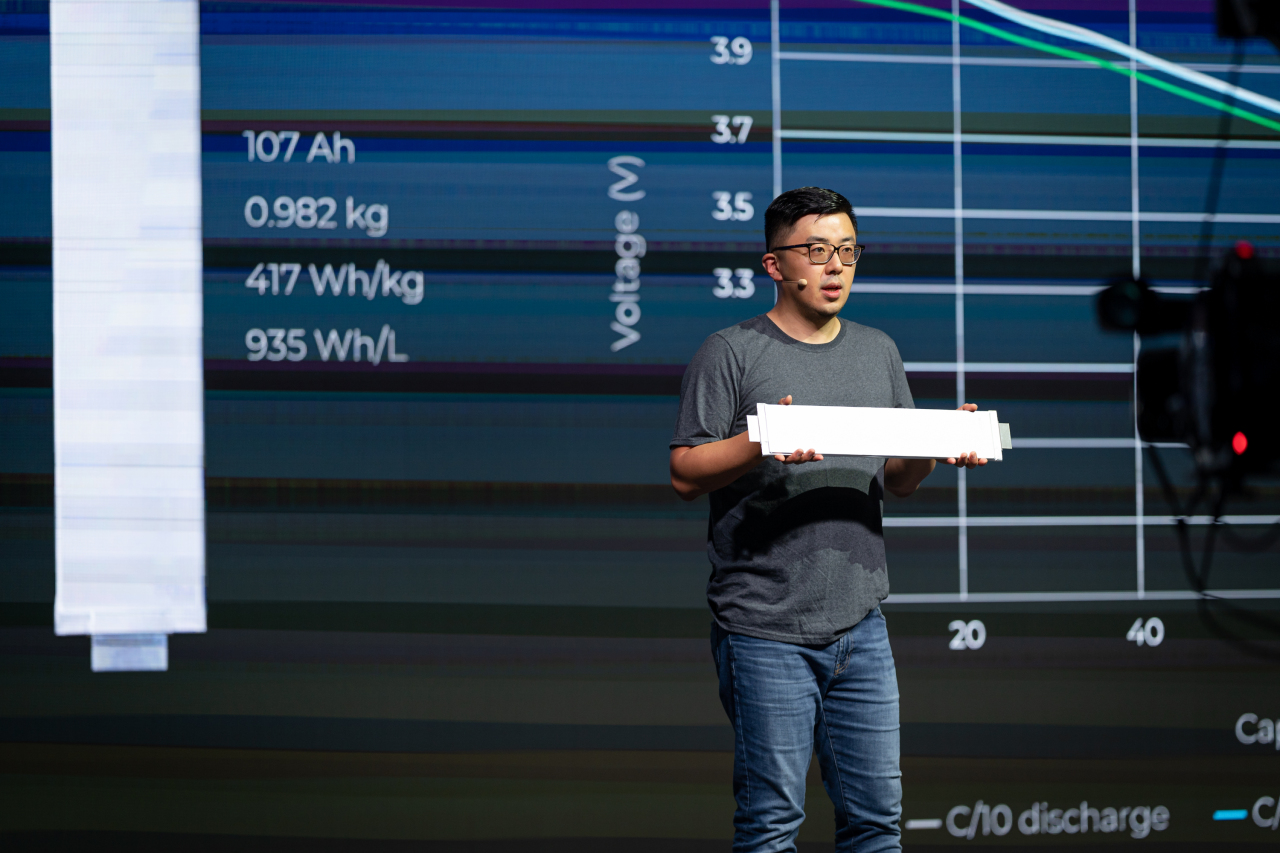 |
SES founder and CEO Qichao Hu introduces the world’s largest lithium-metal battery cell at the firm’s annual Battery World event on Thursday. (SES) |
SES on Thursday unveiled the world’s largest lithium-metal battery that is big enough to power an electric vehicle.
According to the Singapore-based startup, the battery cell, dubbed “Apollo,” weighs just 0.98 kilogram and can deliver 107 amperes of electricity per hour. Also, it supports quick charging, taking just 12 minutes to go from 10 percent to 90 percent.
SES claims that Apollo is the world’s first lithium-metal cell to have breached a 100 Ah threshold, but what does that mean?
For IT gadgets, such as iPhones, a small lithium-ion battery is enough. This tiny battery supplies around 4 Ah of energy, which is enough to keep the smartphone running.
But for electric cars, batteries need to be bigger to store greater energy. The problem is, it’s technologically challenging to increase the size of lithium-metal batteries.
According to SES founder and CEO Qichao Hu, maintaining the structural integrity inside an enlarged cell was the greatest challenge.
Lithium-ion and lithium-metal batteries share the same structure and mechanism. Both have cathodes, the plus side, and anodes, the minus side. They are charged and discharged when lithium ions travel back and forth between cathodes and anodes.
A major difference is, unlike lithium-ion cells, lithium-metal batteries swell and shrink significantly when they are charged and discharged.
For a research-level lithium-metal cell that has one cathode layer and one anode layer, such swelling and shrinking is not an issue. But for a commercial cell for an EV, which has to contain 30 to 40 layers of cathodes and anodes each, maintaining the structural integrity -- as well as performance and battery life -- is the ultimate challenge.
The promise is that a lithium-metal cell, if built sufficiently big, would be lighter and about 30 percent more powerful than the strongest batteries in the market.
And Hu claimed his firm can make it 18 percent cheaper in an interview with The Korea Herald.
By Kim Byung-wook (
kbw@heraldcorp.com)








